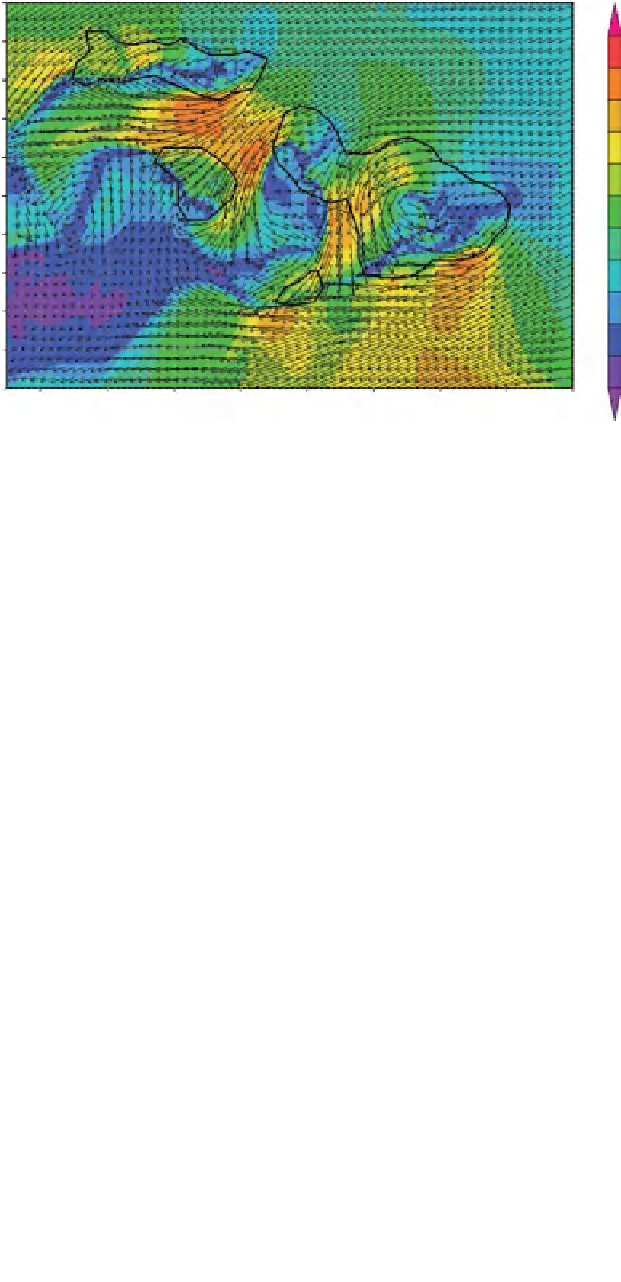Environmental Engineering Reference
In-Depth Information
80 m Wind speed/Direction (80 m) 00Z14OCT2007
21.3N
18
21.2N
16
12
10
9
8
6
5
4
21.1N
21N
20.9N
20.8N
20.7N
20.6N
20.5N
3
1
0
20.4N
20.3N
157.4W 157.2W
157W
156.8W 156.6W 156.4W 156.2W
156W
155.8W
Figure 14-1.
A numerical simulation of wind speeds and directions at 80 m height around
the islands of Maui, Lanai, and Molokai, in the Hawaiian Islands, showing the effects of both
mountain blocking (blue and purple areas) and channeling (red areas). Note how the wind
direction, indicated by the arrows, is deflected by high pressure on the upwind side and by low
pressure on the lee side of the islands.
Source:
AWS Truepower.
•
Roughness Transitions.
When the wind comes off the land, the abrupt decrease in
roughness generates a zone of gradually increasing wind speed near the surface,
called an
internal boundary layer
(IBL), whose depth grows with distance off-
shore (Fig. 14-3). Above this IBL, the original wind profile is largely unaffected.
Depending on the wind direction, distance from shore, and rate of growth of
the IBL, the transition may occur either above or below the hub height of the
turbines in an offshore wind project.
•
Stability Transitions.
In addition to a decrease in roughness, wind coming off the
land can sometimes encounter a large difference in surface temperature, which
produces changes in thermal stability. For example, if warm air moves over
cooler water, as often occurs on summer days in the middle and high latitudes,
the boundary layer becomes thermally stable. This can cause the atmosphere to
decouple from the surface layer, allowing strong winds to build at heights near
the hub heights of wind turbines.
•
Mesoscale Circulations.
Surface temperature and moisture gradients can create
mesoscale wind circulations, which can affect the offshore resource. A classic
example of a temperature-driven circulation is a sea or lake breeze (Fig. 14-4).
On a typical summer day, as the sun heats the land surface, the air above it
tends to warm and rise, causing relatively cool, moist air to be pulled in from
over the water. (The opposite circulation, a land breeze, can occur at night as













Search WWH ::

Custom Search